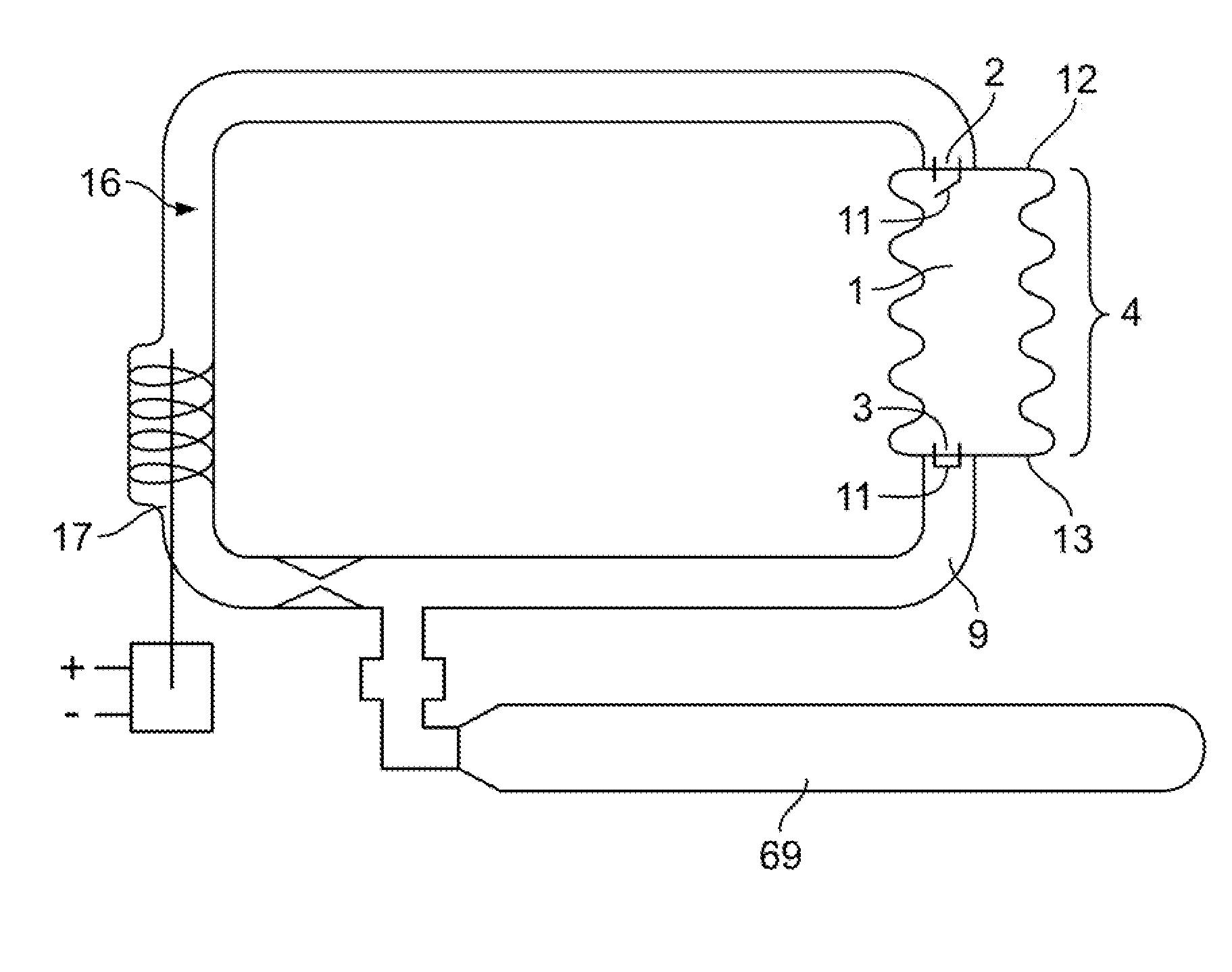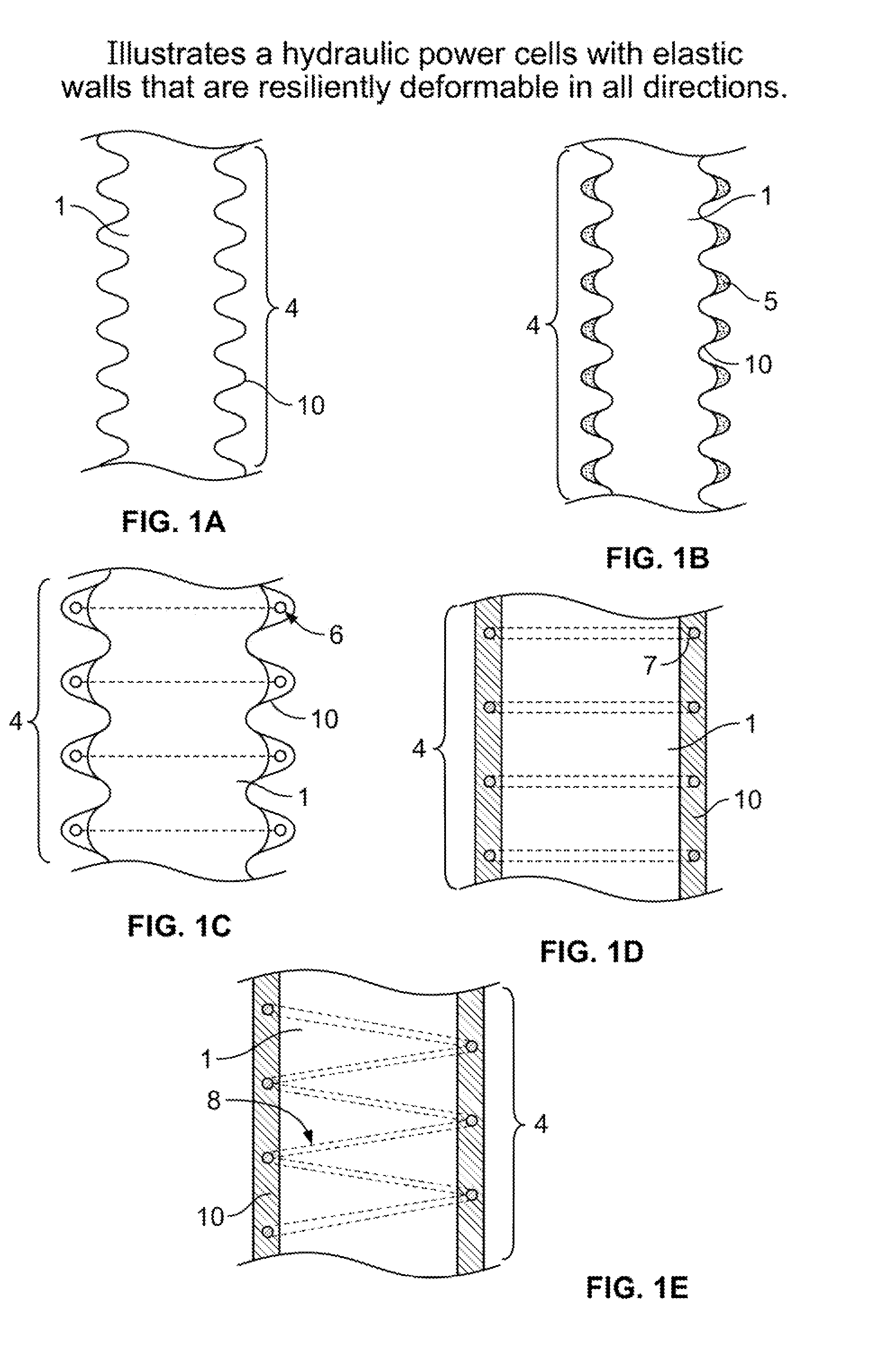Marine energy extraction systems and units
a technology for energy extraction systems and submarines, applied in the direction of electric generator control, machines/engines, mechanical equipment, etc., can solve the problems of inability to sustain indefinitely reliance on fossil fuels as primary energy sources, and no prior conceived system or method has achieved the efficiency or cost-effectiveness required to make wave-powered energy a viable alternative energy sour
- Summary
- Abstract
- Description
- Claims
- Application Information
AI Technical Summary
Benefits of technology
Problems solved by technology
Method used
Image
Examples
example 1
Calculation of Possible Energy Generation from Marine Energy Extraction
[0083]A simple calculation assumes an average changing head of one foot per second with the entire hydraulic mass (water moved through all hydraulic cell structures in a mat) weighing 10,000 tons. Extrapolating such an assumption yields 20,000,000 ft. lbs. / sec. or 34,000 HP or 27,000 kw / sec.
example 2
Typical Specifications for Elastic and Flotation Material Used in Marine Energy Extraction (MEX) Components
[0084]
1)Basic sheet or tubular stocksheet thickness ⅛″-4.0″tube diameter 0.005″-12″ 2)Durometer60A ± 5 Rockwell 3)Basic ingredients:Hycar ~45%PVC ~45%Plasticizers ~10% 4)Preferably no fabric or filler 5)Tensile (ASTM D-412-68)~2,500 p.s.i. 6)Ultimate elongation~380% 7)Ross flexing test per ASTM D 1052-551″× 6″×¼″ thick sample cycled 100 times / min.through 90° - no failure at 1,000,000 cycles 8)Tear strength - Graves Tear ASTM D 1004Longitudinal 190# / 11Transverse 190# / 11 9)Puncture resistance MIL-P-6396CThree tests: 135, 129, & 122#10)Abrasion resistance ASTM D 1630-61263, 244, 240 (3 results, values are relativeratios to natural rubber.11)Accelerated weathering - carbon arc without waterASTM 0750-68 & G23-69Tensile Tests (ASTM D-4 12-68)TimeUltimateUltimate(hrs.)TensionElongation 02,241 p.s.i.384%222,224 p.s.i.368%442,045 p.s.i.345%662,004 p.s.i.318%881,845 p.s.i.269%12)Low tem...
example 3
Tube Formation for Use as Tubular Member for Hydraulic Power Cell
[0085]A basic hydraulic power cell is preferably composed of an inexpensively extruded tube of the typical elastic material, Example 2, within which, after cutting or otherwise producing a correct tube length, standard valving, check valve-like structures, usually of the same elastic material and optionally, connector provisions, are inserted, bonded or otherwise positioned such that a simple, elastically deformable, one-way liquid flow hydraulic power cell is configured. The HPC structure can be then utilized in an appropriate mat or other marine energy extraction system.
PUM
 Login to View More
Login to View More Abstract
Description
Claims
Application Information
 Login to View More
Login to View More - R&D
- Intellectual Property
- Life Sciences
- Materials
- Tech Scout
- Unparalleled Data Quality
- Higher Quality Content
- 60% Fewer Hallucinations
Browse by: Latest US Patents, China's latest patents, Technical Efficacy Thesaurus, Application Domain, Technology Topic, Popular Technical Reports.
© 2025 PatSnap. All rights reserved.Legal|Privacy policy|Modern Slavery Act Transparency Statement|Sitemap|About US| Contact US: help@patsnap.com



